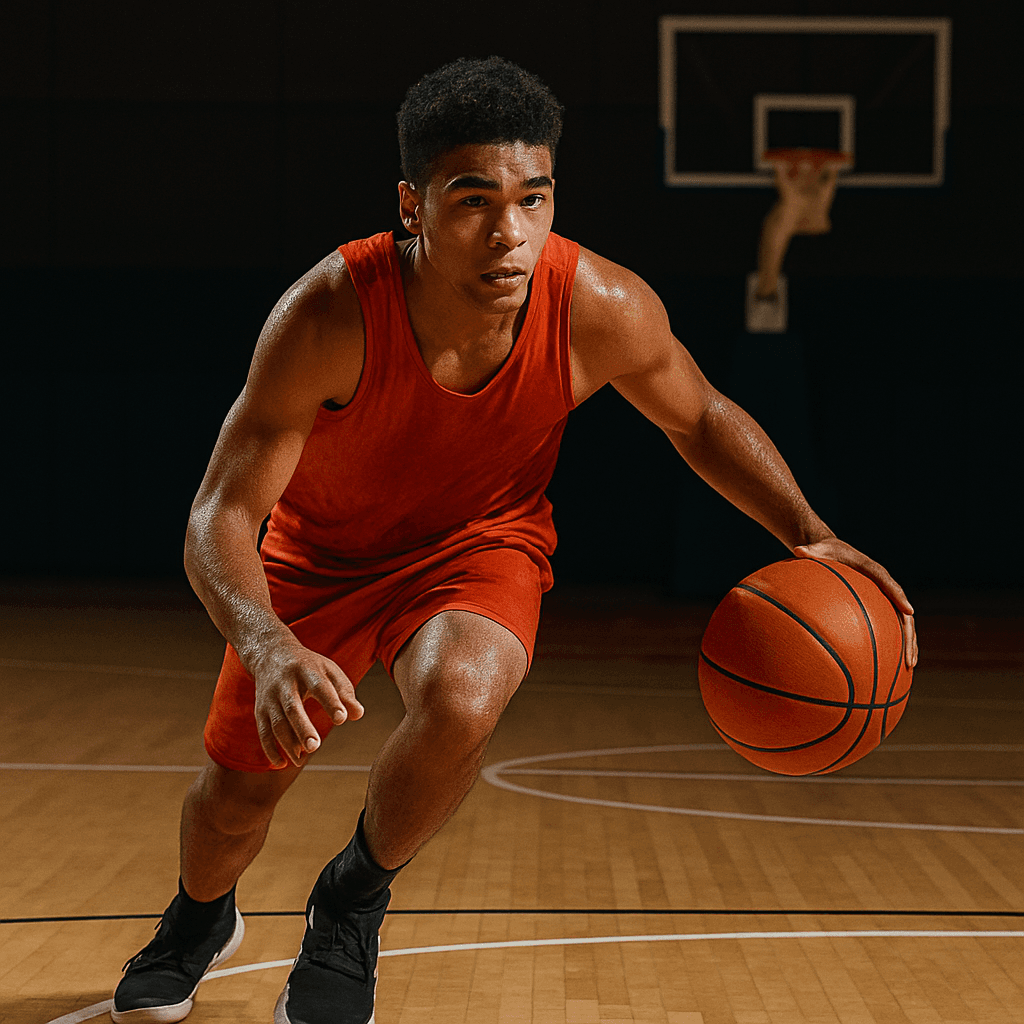
Endurance
Endurance helps basketball players perform at full speed from start to finish.
Basketball Endurance Training: Building Stamina to Compete at Every Level
Endurance is the backbone of basketball. The game demands players to run, jump, defend, and attack nonstop. Unlike some sports with longer breaks, basketball requires constant motion for 32 to 48 minutes, depending on the level of play. A player with strong endurance can keep pushing at full speed when others slow down, giving their team a huge advantage.
This guide will explain what endurance means in basketball, why it matters, the types of endurance you need, and the training methods that can help you stay strong from the opening tip until the final buzzer.
Why Endurance Matters in Basketball
Basketball is often called a game of runs, and the team that stays fresher usually wins. Endurance doesn’t just affect how fast you can run—it impacts your skills, focus, and decision-making.
What Happens Without Endurance
- Tired legs = missed shots. Shooting accuracy often drops late in games because players lose lift and balance.
- Slow defense = easy baskets. Without stamina, players can’t keep up with drives or close out on shooters.
- Poor choices under fatigue. Mental sharpness drops when the body is exhausted, leading to turnovers.
- Higher risk of injury. Fatigue can cause sloppy footwork, bad landings, or slow reactions.
Benefits of Strong Endurance
- Consistent effort on both ends of the floor
- Faster recovery after sprints or fouls
- Confidence to play hard late in games
- Extra edge in close matchups
Types of Endurance Needed in Basketball
Aerobic Endurance
This is your body’s ability to keep moving for long stretches, like jogging up and down the floor or playing several minutes without a whistle. Aerobic endurance keeps your breathing steady and prevents you from getting winded too quickly.
Anaerobic Endurance
This is short bursts of high energy—sprinting on a fast break, sliding quickly on defense, or jumping for rebounds. Basketball is filled with these explosive actions, and anaerobic endurance lets you perform them again and again without gassing out.
To dominate in basketball, you need both types working together.
Training Methods to Build Endurance
On-Court Conditioning
Full-Court Sprints
- Sprint baseline to baseline, then jog back. Repeat 10–12 times.
- Builds recovery and mimics game speed.
Suicide Runs (Line Drills)
- Run to each line (free throw, half-court, opposite free throw, full court) and back.
- Improves quickness, direction changes, and mental toughness.
Continuous 3-on-3 or 4-on-4
- Play without breaks. After a score, the other team immediately takes the ball out.
- Game-like conditioning, teaching players to perform while tired.
Off-Court Conditioning
Interval Training
- Alternate 30 seconds sprint / 30 seconds rest for 10–15 rounds.
- Trains both aerobic and anaerobic stamina.
Jump Rope
- Jump 1–2 minutes at a time, mixing basic jumps, double unders, and side swings.
- Improves footwork, quickness, and endurance.
Long Runs (with caution)
- Steady jog for 20–30 minutes.
- Builds aerobic base but shouldn’t replace basketball-specific work.
Strength and Core Training
Endurance isn’t just about lungs—it’s about muscles lasting longer too.
- Bodyweight Circuits: Push-ups, squats, lunges, planks, mountain climbers
- Core Work: Strong abs and lower back reduce fatigue late in games
- Light Weights with High Reps: Build muscular stamina, not just strength
Nutrition and Recovery for Endurance
Eating for Energy
- Carbohydrates: Main fuel for basketball (rice, pasta, potatoes, fruit)
- Protein: Helps repair muscles after tough practices
- Hydration: Dehydration leads to quick fatigue—drink before, during, and after games
Rest and Recovery
- Sleep: Aim for 8+ hours to recharge body and brain
- Active Recovery: Light jogging, stretching, or swimming the day after games
- Ice and Stretching: Helps muscles recover faster
Common Mistakes in Endurance Training
- Only running long distances—basketball is about bursts, not marathons
- Overtraining without recovery, which can cause injury
- Skipping skill work and focusing only on conditioning
- Not tracking progress in sprints, reps, or times
Final Takeaway
Endurance is more than just running laps—it’s the ability to perform every basketball skill with energy and focus, no matter how late in the game it is. The best players combine aerobic endurance for steady effort with anaerobic endurance for explosive plays.
By training with sprints, drills, intervals, strength, and smart recovery, any player can build the stamina needed to play at full speed from start to finish. Remember: tired players don’t win games—conditioned players do.